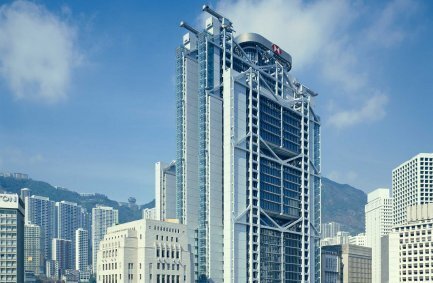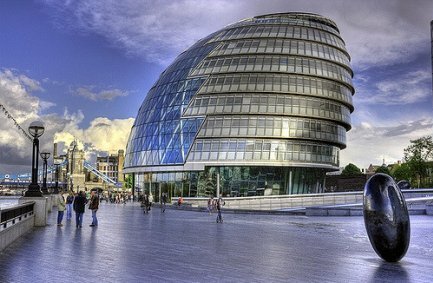Remembering Sir Norman Foster
British architect and Pritzker Prize winner Norman Foster, was born in a working class area of Manchester in 1935. An avid early interest in design, engineering, and sketching lead to a stint in the Royal Air Force as an engineer, and later, degrees in architecture from the University of Manchester and then Yale’s School of Architecture.
By 1961 his interests were solidly in the camp of the great modernists, Frank Lloyd Wright, Mies Van der Rohe, Le Corbusier, and Oscar Niemeyer, and his early collaboration with Buckminster Fuller influenced his use of structures surrounded by a lightweight shell or dome. Working with “Bucky” also developed his views on environmental design, the use of natural light, and interior atria.
His work on the Hong Kong and Shanghai Banking Corporation headquarters (1979–86) in Hong Kong (top photo) helped establish Foster as a world standout in high-tech futuristic design. Continuing to work on international landmarks, he and his firm rebuilt the Reichstag (2nd photo) (1992–99) in Berlin after the reunification of Germany. The addition was a glass and steel dome, which surrounds a spiral observation platform. London City Hall, completed in 2002, is a sloping egg-shaped exterior, containing a towering helix shaped interior walkway (3rd photo).
Steve Jobs sought out Foster in 2009 for his ideas on what is now Apple Park (last photo) in Cupertino, California. After Jobs’ death in 2011, Apple's staff continued to work with Foster to complete the design. The campus was open to employees in April 2017 and work continues to complete the project.
"A building should touch your spirit – you should want to come back, you should want to stay. The best architecture is about light and lightness.” Norman Foster.
Enjoy an excellent Charlie Rose interview with Norman Foster.




